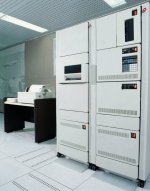Oh, I have stories...what killed CDC in my opinion was the deadwood--the "we've always done it this way" crowd. And there was probably no denser population of that line of thought in CPD. SSD was different, as it operated on the Lockheed business model--you worked with your project. When your project contract ended, it was up to you to find a new project or leave. But CPD had too many lifers--some were really good; e.g. Don Nelson and COBOL. Between projects, I was briefly recruited for the SCOPE design team--and left after about two months out of frustration. "You're rocking the boat" I was told.
When SVLOPS finally cycled down, it hit a lot of people hard. One fellow, who I'd worked with for years, committed suicide.
It was ironic that CDC even existed in the middle of Silicon Valley, which was full of risk-takers and innovators. To its credit, the CDC mafia did go on to form several SV startups, but that was the exception rather than the rule.

